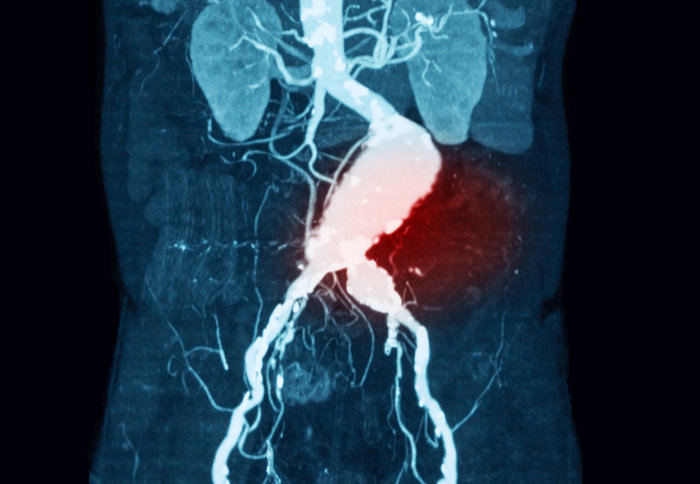Most women ‘unlikely to benefit’ from aneurysm screening programme
by Ryan O'Hare

A national screening programme to detect abdominal aortic aneurysms in older men would be unlikely to benefit most women, new research has found.
Abdominal aortic aneurysms (AAAs) affect the body’s largest blood vessel, the aorta, causing it to swell and in some cases rupture, with potentially life-threatening consequences.
In 2009, the NHS introduced ultrasound screening in men aged 65 and over in the UK to detect and treat the condition – which can be symptomless until the point of rupture.
We need better information on aortic sizes of women at different ages, to see whether we have been using the wrong diagnostic threshold in women and therefore whether the population prevalence has been underestimated in women. Professor Janet Powell Visiting Professor at Imperial’s Department of Surgery & Cancer
Previous studies have shown that population screening programmes for men, in countries such as the UK, Sweden and the United States, can reduce AAA-related mortality by up to 40 per cent, although any reduction in all-cause mortality is small.
In the latest study, published in The Lancet, researchers wanted to see if women in the UK, who are less likely to have AAAs, could also benefit from a similar screening programme.
A team including researchers from Imperial College London and the Universities of Leicester and Cambridge, and funded by the National Institute for Health Research, used datasets to simulate outcomes of a screening programme for women.
Little benefit
They found that by UK standards an AAA screening programme for women, mimicking that in men, “would yield little benefit”.
Their analysis revealed that screening women – based on the current criteria for men – could potentially reduce deaths from AAA among women by 7 per cent for those aged 65 to 75 and by 3 per cent from age 65 to 95, but it would require 3,900 screening invitations to avoid one AAA-death, and is unlikely to be cost-effective.
Cost effective?
“We used a sophisticated computer model to find out whether an AAA screening programme for women would be cost-effective,” said Professor Simon Thompson, a statistician based at the University of Cambridge and who led the project. “This showed that if women were also offered screening, only a very small number would benefit and the cost of such a screening programme would not be a good use of NHS resources.”
However, the team add that more research is needed to understand the condition in women and understand the additional risk.
Professor Janet Powell, Visiting Professor at Imperial’s Department of Surgery & Cancer and co-author of the paper, said: “We need better information on aortic sizes of women at different ages, to see whether we have been using the wrong diagnostic threshold in women and therefore whether the population prevalence has been underestimated in women. We also need to reduce the operative mortality in women and find out whether screening has adverse effects on quality of life.
“A future step would be to see if there are certain groups of women at higher risk of the disease who might benefit from a targeted screening programme.”
-
This article is based on materials provided by the NIHR Cambridge Biomedical Research Centre.
‘Should we screen women for abdominal aortic aneurysm? Analysis of clinical benefit, harms and cost-effectiveness’ by Sweeting, MJ et al. is published in The Lancet. DOI: 10.1016/S0140-6736(18)31222-4
Article text (excluding photos or graphics) © Imperial College London.
Photos and graphics subject to third party copyright used with permission or © Imperial College London.
Reporter
Ryan O'Hare
Communications Division